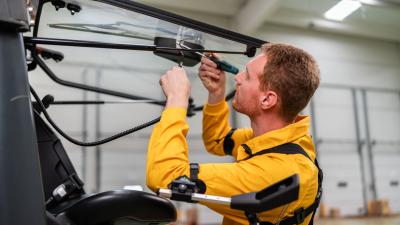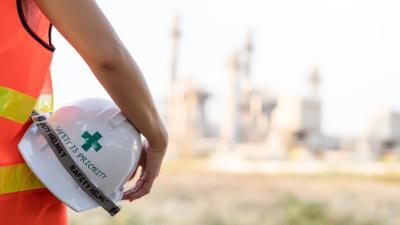According to a report from the new Lloyd’s Register Foundation Global Safety Evidence Centre, an evidence-led approach is key to navigating the rapid spread of digital technologies – including AI – in relation to occupational safety and health (OSH).
Research for the report, The impact of emerging technology on safety at work, was carried out by RAND Europe. The researchers mapped the available evidence on the interaction between emerging technologies and OSH, which was found to be patchy, with more known about the impact of some technologies than others. The report found that:
- OSH-focused smartphone apps may encourage managers to prioritise safety, promote healthy habits in workers and thereby improve wellbeing, although evidence for their impact on performance or sickness rates is mixed.
- Augmented and virtual reality (AR/VR) used for interactive training may improve workers’ engagement in learning and motivation to apply safety knowledge, although there is mixed evidence as to whether they improve safety knowledge on their own.
- Algorithmic management and emotional AI may have negative impacts on workers’ health and relationships at work, with the report highlighting examples of employees supressing their true emotions to preserve their privacy, and many viewing AI as a sign of a lack of trust from their employer. However, design improvements and collaborative implementation may reduce these risks.
- Wearable devices, which track health data and environmental risks, may increase both stress and complacency about safety risks, depending on how they are used.
- Collaborative robots (cobots) which work alongside humans, typically in manufacturing settings, could have benefits and risks for worker safety. More evidence is needed, including on how to safely integrate them into existing assembly lines.
The report sets out a research agenda for the evidence gaps that need filling, including on how different groups of workers in different industries may be differently affected by these technologies. Other emerging technologies, including generative AI, autonomous vehicles and digital twins will also require investigation.
The importance of collaboration between researchers, safety practitioners, workers and tech innovators is also stressed – this will help ensure the right questions are asked to effectively solve these challenges and enable technological benefits to be realised safely.
Nancy Hey, Director of Evidence and Insight at Lloyd’s Register Foundation, said: “New digital technologies are rapidly changing our economies and our working lives. This report shows how digital technologies introduced for business reasons can bring new risks, as well as how new technologies can be used to keep workers safe.
“We know it is possible to maintain and improve occupational safety without stifling innovation during major technological transitions. We’ve been through many rapid technological shifts in the past that have been made safer by acknowledging the challenges and making a collective effort to address them – that’s what helps people feel confident with change.
“Coordinated research, grounded in safety science, is essential for technological innovation to develop effectively and safely.”
Dr Magdalena Soffia, Head of Social Research at the Institute for the Future of Work, added: “This report comes at a crucial moment. As industries worldwide rush to adopt emerging technologies there is too often blind faith in technical capabilities. In reality, the impacts of these systems – including how well they improve workforce health and safety – depend on how they are designed, developed and deployed. Governing and regulating emerging technologies is not only about enabling growth and creating new sources of value, it is also about anticipating and mitigating risks to our most important resource: the workforce. Evidence maps like those developed by Lloyd’s Register Foundation’s new Global Safety Evidence Centre are essential for tracking how technologies affect workers’ health and safety over time, and to guide evaluations before investing in costly interventions.”
A further report from the Global Safety Evidence Centre, focusing specifically on how new technology is being used to improve safety, will be published in October.



